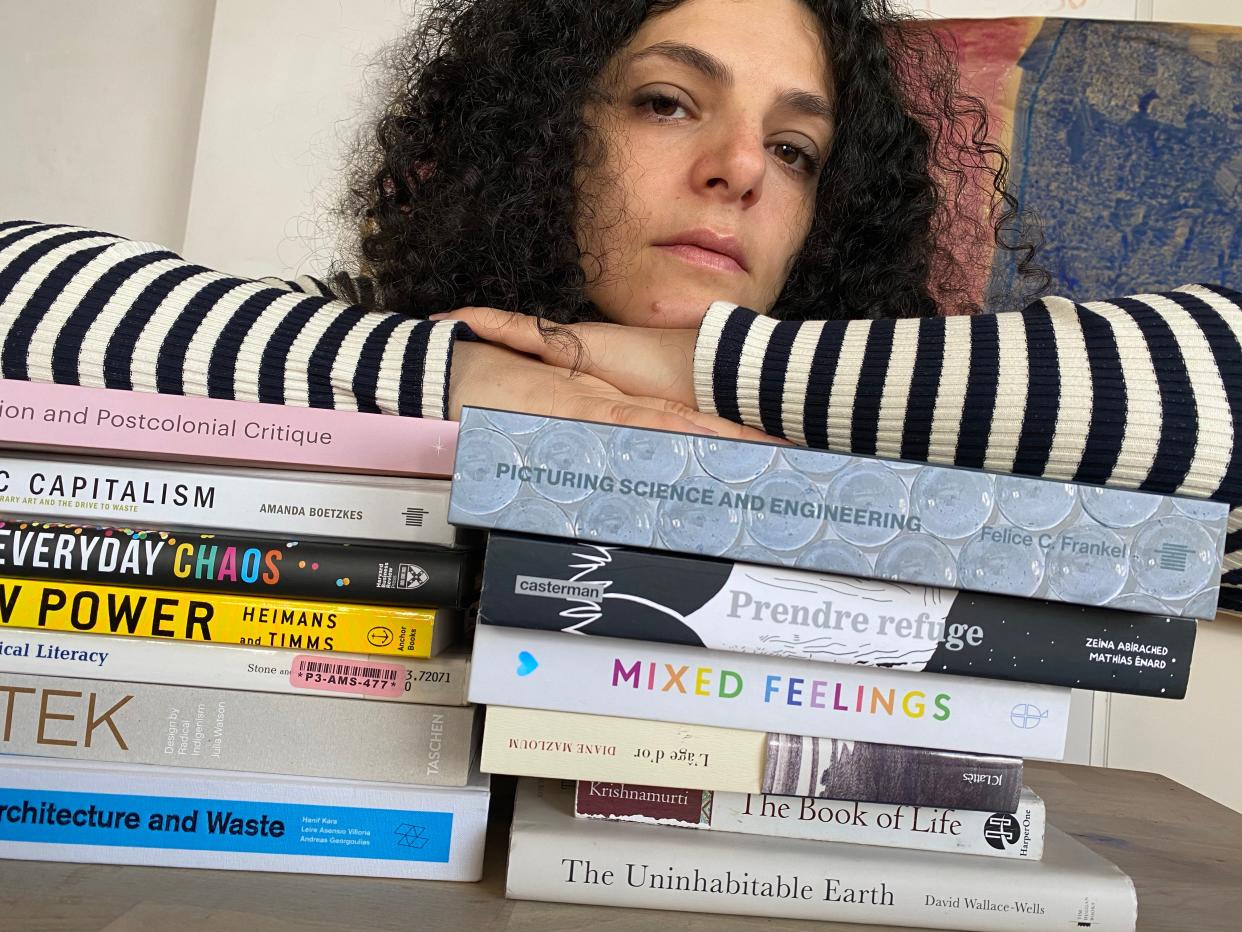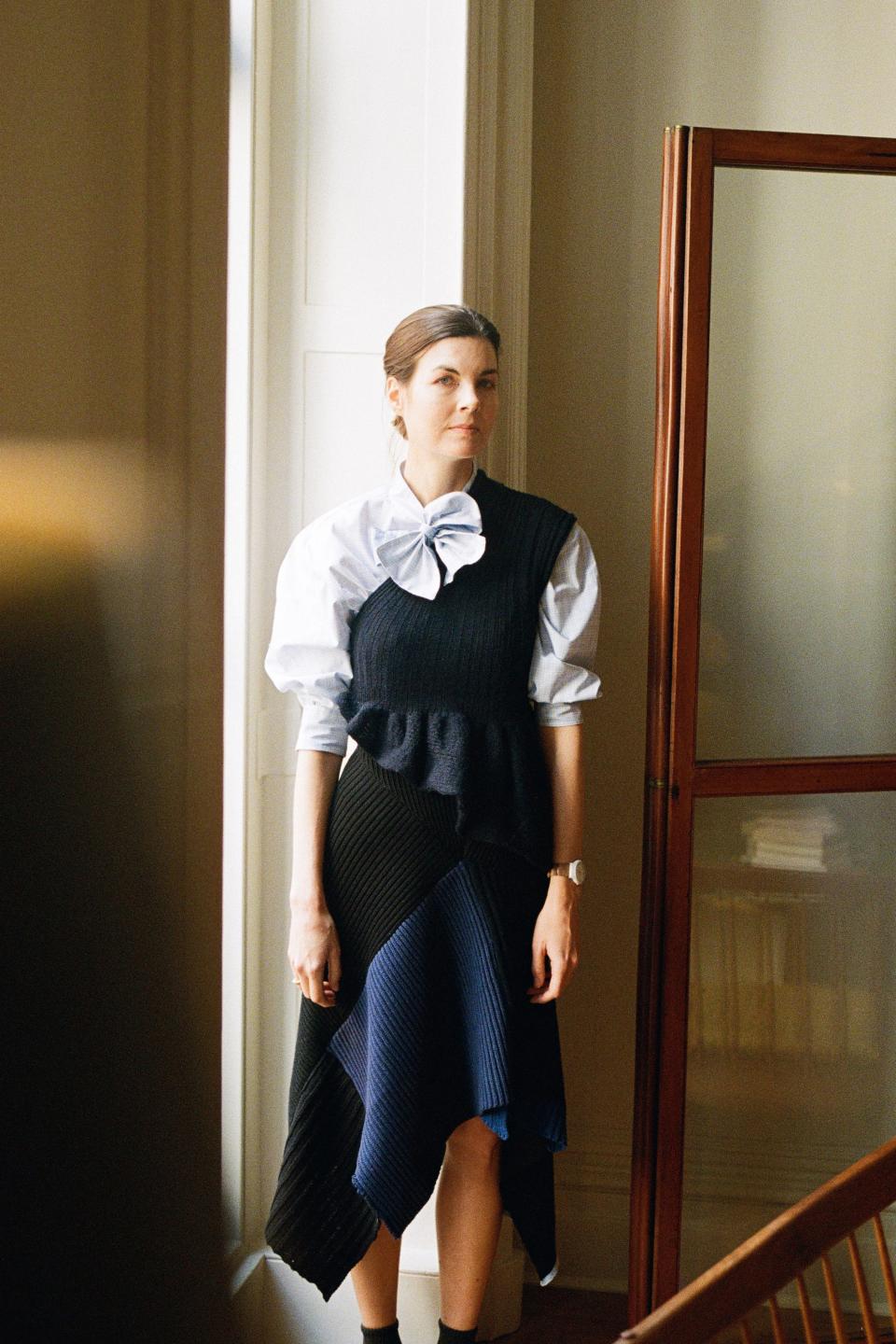“Fashion Creates Culture, and Culture Creates Action”: Céline Semaan on the Industry’s Role in Times of Crisis

In any crisis, particularly the two we happen to be living through at the moment—coronavirus and climate change—we tend to look for a silver bullet, a solution that’s both obvious and efficient. How can we fix this right now? When will things go back to normal? Where’s the vaccine? With COVID-19, we’ve seen that “slowing the spread” actually requires a combination of efforts: social distancing, hand-washing, closing non-essential businesses, and, yes, eventually developing a cure or vaccine. Addressing climate change calls for a similar mix of large and small fixes, and the same is true if you zoom in on fashion’s footprint. Imagining a more sustainable industry isn’t just about organic materials or plastic reduction or producing less or upcycling; it’s all of those things, and much more.
One thing that rarely comes up are company KPIs, or key performance indicators; we want to hear about creative and tangible solutions, like botanical dyes or upcycled materials, not metrics. Especially because those numbers are often the barriers to progress: Companies don’t want to budge on their sales or bottom line, and they aren’t willing to make sustainable changes unless there’s a business case for them, hence decades of inaction.
Céline Semaan, the founder of Slow Factory and Study Hall, points out the problem: Those KPIs and measures of “success” are out-of-date and antithetical to our current crises. We have to rewrite those rules so there is a business case for sustainability. Companies have to reevaluate how they measure their success, so it isn’t just based on economic performance, but on environmental and social action too. Their values also have to shift beyond just profit and short-term growth, because we’re seeing what happens when those are disrupted: Businesses crumble, jobs are lost, and people’s physical and mental health are compromised.
“In architecture, there’s a stress limit: the tension they test before a building would collapse,” Semaan says. “Fashion has never really tested its limit, and the system was already about to collapse. It was so broken, and it wasn’t built for resiliency—it was built for economic growth and profit. But the construct of profit and money is man-made—it’s our invention, it’s a concept. When we build systems around a concept and the inflation of that concept, it’s as if you’re building a system around a bubble of air. Sometimes that bubble [fills up] and your system feels like it’s succeeding, but when it collapses, the entire system around it collapses, because it isn’t built around anything real.” She continues: “Of course, money is real—it’s so real! But what we need to design is a fashion system that has resiliency and sustainability and heart, one that meets the environment where it is, that has a scientific approach, that has respect to human rights. Otherwise, we’re just engaging in exploitation [of people and land] at the benefit of profit. That system, as we’re seeing now, is not sustainable.”
It’s possible that those starting new businesses in the years to come will heed Semaan’s words. Convincing established and global brands to pivot will be more difficult, particularly the ones more determined to get back to their pre-coronavirus ways of working. Everyone wants things to go back to “normal,” but with each passing day, as we get further away from our pre-coronavirus lives, that concept feels less and less likely. In fact, Semaan warns against misinterpreting the recent past: “When we consider something to be ‘normal,’ it numbs us,” she says. “Nothing is actually normal—normal is a construct to justify things [that are happening]. Whatever was ‘normal’ before was, in fact, being disproved by so many environmentalists and scientists and activists, because nothing about it was normal. So the talk about a ‘new normal,’ it gives us this idea that a few things will change, but we’ll mostly try to keep our lives the same, and that’s really scary.”
Many of the designers we’ve spoken to amidst the pandemic seem willing to leave their old ways behind and adapt to the current moment, though it’s likely that some are crossing their fingers for a September fashion show, or they’re waiting for the green light to ramp up production again. Semaan is urging all of them to at least reconsider their materials and where they came from—right down to the literal roots. Her bold suggestion: “Fashion needs to take a 20-year break from harvesting any crops that aren’t regenerative.” (Regenerative agriculture refers to methods that preserve and improve biodiversity in the soil, which then leads to higher yields and a greater amount of carbon drawn into the earth from the atmosphere. “Regular” or degenerative agriculture has led to barren, nutrient-stripped land, which could contribute to greater food insecurity in the future.) “The world is relying on 60 years of topsoil [until we run out] because we’ve engaged in agricultural models that were degenerative for so long, with pesticides and other methods,” Semaan adds. “That’s why the fashion industry needs to give the earth a break. Plus, we also have so much available—we need to learn how to use things we already have. The concept is very close to how we managed to rebuild after World War II. At Slow Factory, we just unearthed a manual the British government put together [during WWII] about how to mend and fix your clothes.”

In addition to mending the clothes we already own, Semaan is urging designers to consider the full life cycle of their garments—ideally so they can be taken apart or broken down into new yarns. “The designers of the future, they need to know that if you’re putting a product out there, you have to know how to fix it for your customers, or you have to know how to disassemble it,” she says. The idea is that clothing wouldn’t end up in landfills, and eventually, we would only be working with deadstock and regenerated materials. If that sounds less sophisticated or lucrative than our current model of new, new, new, then you’re missing the fact that those are two new business models. “Deadstock and waste are two industries we have yet to tap into,” Semaan says. Several designers already design predominantly with deadstock or vintage, including Erin Beatty of Rentrayage and Raffaella Hanley of Lou Dallas, and in recent years we’ve seen a number of textile recyclers emerge, like Evrnu. But getting to a place where those businesses are the norm, not the exception, will require a shift in both our values and in our fashion and design education. That applies both to students and the average fashion fan; brands will have to take on the responsibility of educating their customers, least of all because their customers are going to be demanding answers.
“In 2010, I coined the term ‘fashion activist,’ because fashion creates culture, and culture creates action,” Semaan says. “Fashion has tremendous power in impacting culture, but it also has to [embrace] education on these issues. It’s about making education accessible, transparent, and open, the same way fashion is.”
That’s a key mission for Slow Factory, which is now offering free “sustainability literacy” courses on Zoom for designers and shoppers hoping to learn more. Semaan was excited to report that her first sessions filled up immediately and exceeded her wildest expectations; let’s take it as a sign that more and more people are getting serious about this every day. It’s fair to assume that in the future, everyone in this industry will need to be highly educated about fashion’s environmental and social issues and, more importantly, be willing and ready to adapt.
In our sixth week of quarantine, it’s beginning to feel more and more like this isn’t just a momentary disruption of our “normal” lives; maybe we’re entering an entirely new era of fashion, one we couldn’t have even imagined before. Knowledge, creativity, and resiliency will be the new qualities we prize in a leader or colleague. “Fashion is one of the most creative industries, so let’s see how creative we can be in solving these issues,” Semaan says. “Let’s see how avant-garde we can be in addressing the climate.”
Originally Appeared on Vogue

